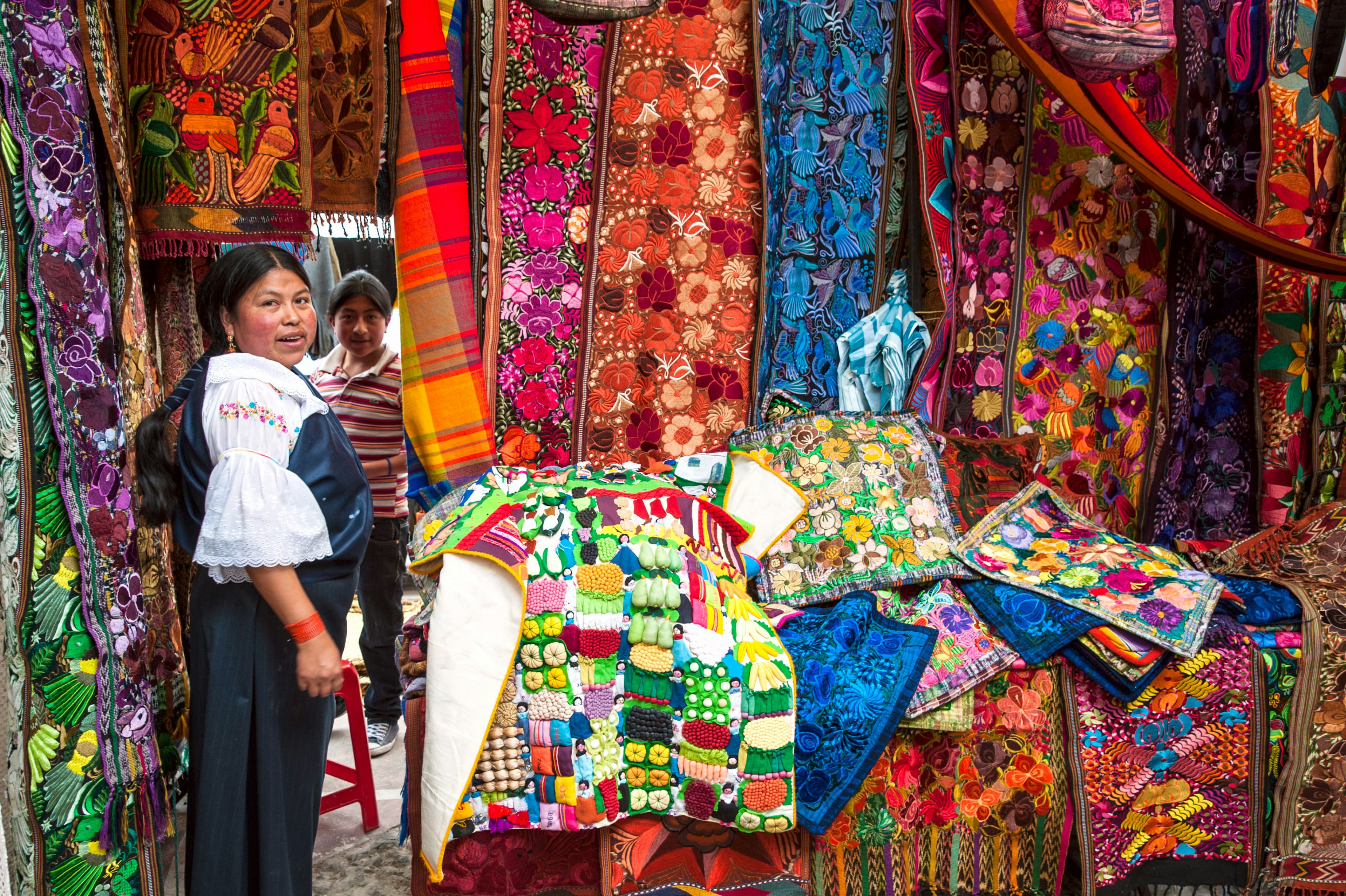
Everything you need to know about visiting Ecuador on a budget

May 1, 2024 • 6 min read

It's free to enter Yasuni National Park, which leaves extra cash for a guided tour © John Elk III / Getty Images
With an incredible landscape that includes the lush and wild Amazon rainforest, Andean highlands, a Pacific coastline and even the famed Galapagos Islands, Ecuador packs a lot into a small space.
Brimming with diversity, you can experience different geographical regions within a few hours – it's no wonder that this is one of the most popular destinations in South America.
However, with the US dollar as the official currency, Ecuador tends to be more expensive than its neighbors. But, with these insider tips, you can still have the trip of a lifetime without breaking the bank.
Daily costs in Ecuador
Hostel room: $8-25 a night
Basic room for two: $35-75 a night
Self-catering apartment (including Airbnb): $30-55 a night
Public transport one-way ticket: $0.25-$0.50 within the city
Coffee: $2
Lunch specials: $2-$5
Dinner for two: $15-50
Beer pint at the bar: $3-7
Try booking a flight through a Spanish-language website
Unfortunately, Ecuador is one of the most expensive countries in Latin America to fly into. Despite the announcement of tax and airfare reductions in 2023, flights are still quite pricey in comparison to neighboring countries.
Traveling during off-peak months is always an option, but prices don’t vary substantially – the best recommendation is to snatch the top deals by booking your flight well in advance.
A pro tip while traveling in Latin America is to test your luck and search for flights on Spanish-language websites. You're not always guaranteed a bargain, but you can come across discounted options that will either take you to the capital city, Quito, or the main port, Guayaquil.
Buy bus tickets at terminals
Once in the country, you can easily find your way to other cities and rural areas by bus. Unless you’re visiting the Galapagos Islands, you can avoid flying entirely and opt for local buses or bespoke hop-on/hop-off bus tours.
Although some transportation companies offer ticket purchasing online, the most straightforward way to find cheap bus tickets is to head to the central bus terminals (terminal terrestre).
Distance between cities varies, but trips can take from two to 12 hours and cost between US$3 to $20, depending on the destination. Learn about other ways to explore the country with our guide to getting around Ecuador.
Avoid traveling during national holidays and big festivities
High season in Ecuador runs between June and September and from December to February. However, the charm of this picturesque country is that you can visit any time of the year and have an incredible time.
Situated on the Equatorial line, Ecuador doesn’t experience extreme seasonal changes, making it a great destination even off-season.
Nevertheless, it’s best to avoid traveling during national holidays like Independence Days, Día de los Difuntos and Holy Week and big festivities such as Christmas and New Year.
Accommodation and transportation demand increases significantly during these dates and the country’s favorite traveling spots such as beaches and thermal baths are generally crowded. For more information on seasonal events, check out our detailed guide on the best time to visit Ecuador.

Experience local food in markets and family-run businesses
Although gastronomic offerings in Ecuador are many and varied, the finest way to experience authentic local cuisine is to opt for food markets and family-run businesses.
Each region flaunts its own signature dishes and culinary secrets, so heading to the markets and so-called huecas (small neighborhood restaurants) will not only save you money but also give you an insight into the locals’ lifestyle.
Most restaurants also offer wallet-friendly lunch specials (almuerzos) consisting of a three-course meal (soup, main dish and juice or dessert) for a bargain price. A way to catch the places worth trying is to follow the locals, who start flocking to lunch spots as early as noon.
Pro tip: In Quito, Mercado Iñaquito, Mercado Central, Mercado Santa Clara, and the small restaurants in the historical center and plazas are mandatory stops for dishes such as locro de papa (potato stew), hornado and fritada (baked and fried pork).
Meanwhile, in Guayaquil head to certified huecas such as Cangrejal de Fa and King Cone to enjoy seafood-based dishes and snacks such as encebollado (fish stew), crab, and green plantain cones stuffed with shrimp.
Prices will vary in every city, but plentiful dishes start at $2. Carry small bills as many of these places only accept cash payments.
Visit local churches and cathedrals
Home to Latin America’s best-preserved historic center, Ecuador is the ideal place to view colonial art and architecture up close. You can visit gold-capped churches and old-town cathedrals nearly everywhere for free, particularly in small cities such as Baños, Otavalo and Riobamba.
Major cities such as Quito, Guayaquil and Cuenca also have their own share of free-entry churches. However, access to domes and monastery museums comes with a fee, which in most cases will be reasonably priced and can go from $2 to $5.
In Quito, admission to the iconic Iglesia de la Compañia de Jesús is free on the first Sunday of every month.
Book self-catering accommodation and opt for local grocery stores
If you'd like to stretch your food budget, self-catering accommodation is a great option. Ranging from shared motels and private rooms to full homes, these rentals provide kitchen and cooking facilities that will help you cut down on food expenses.
While there’s no bulletproof formula for finding the best options, traditional travel accommodation apps are generally reliable in Ecuador.
To cook with local ingredients, shopping at local markets and tiendas de barrio (grocery shops) comes with a low cost and a wide variety.
Given Ecuador’s geographical diversity, you can find nearly every fruit and vegetable all year round and try endemic delicacies on a budget. Steer clear of major supermarkets and malls to save some extra bucks.

Enjoy Ecuador’s natural landscapes for free
Ecuador is synonymous with nature and diversity, so it makes sense that you can access most natural attractions such as national parks, woodlands, beaches, lakes and hiking paths for free.
Tourists' favorite spots such as the Laguna del Quilotoa, Parque Nacional Cotopaxi and Parque Nacional Machalilla (considered to offer a Galápagos-like experience on a budget) can be explored without paying entrance fees.
To make the most out of these experiences safely, you should visit with a guide – the money you save on entrance fees will help pay for that!
Other coveted natural attractions such as the Yasuní National Park and the Galápagos Islands involve entrance fees and traveling expenses, so if you don’t want to miss out on these natural landmarks, plan your finances and time accordingly.
Book tours with locals
A good option to visit the natural attractions of the country is to book short tours with local companies once you’ve landed. Operators such as Aventuras la Plata and Los Gatitos Equinoccial Adventure offer budget-minded packages, from sightseeing trips and short stays in haciendas to natural landmarks.
The advantage of booking trips with local operators is to support the local economy while mingling with nationals at generally cheaper prices.
These tours usually include specialized guides and cover transportation, tickets to attractions, and food, starting at $25 per person.

Don’t buy your souvenirs at malls or from resellers
While this suggestion might be obvious for nearly any trip, this is particularly true in Ecuador. The country prides itself on products such as chocolate, coffee, textiles, and crafts, so if you’re looking to take souvenirs back home, the cheapest option will always involve buying directly from producers and artisan workshops.
In Quito, instead of heading to craft markets targeted at tourists, which only resell products at tenfold prices, visit Centro Artesanal Mazapán in Calderón. There, you can buy the same traditional marzipan figures that nearly every souvenir shop in Ecuador offers, directly from producers.
Meanwhile, if you’re visiting Cuenca hit one of the paja toquilla artisan shops such as Economuseo Municipal "Casa del Sombrero."
When it comes to edible treats such as high-end chocolate and national drinks, supermarkets will be cheaper than souvenir shops. You can also find traditional candy and small treats in food markets and artisan shops in the historic centers.
Explore related stories

Budget Travel
Spain adds long-distance buses to its free train and transit journeysDec 1, 2022 • 7 min read




 Wildlife & NatureEverything you need to know about visiting the Galápagos Islands
Wildlife & NatureEverything you need to know about visiting the Galápagos IslandsNov 10, 2024 • 9 min read


 Wildlife & NatureThe Quiet Parks movement - how to find peace on your travels
Wildlife & NatureThe Quiet Parks movement - how to find peace on your travelsJun 22, 2024 • 4 min read









